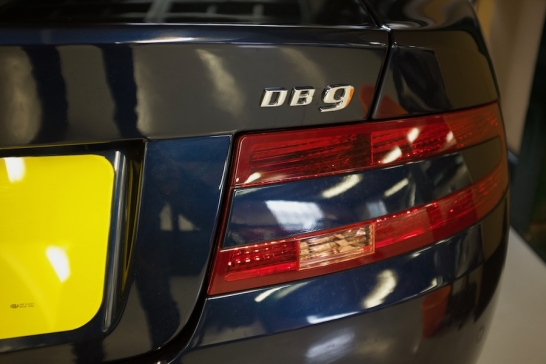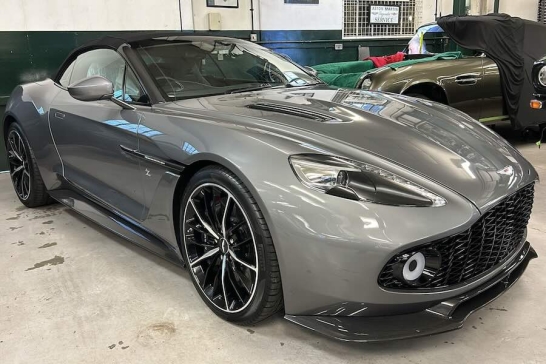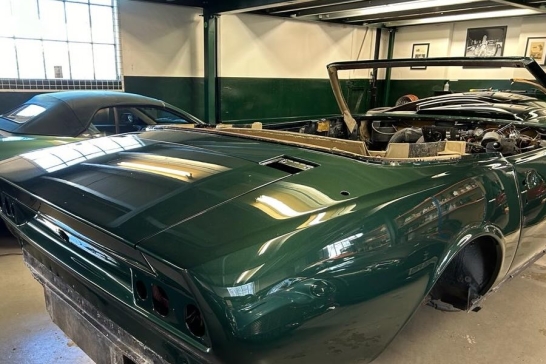From a restoration point of view, there are few differences between restoring and maintaining an Aston Martin DB5 and a DB6. However, there were 1788 DB6’s made meaning there are more of them in circulation - given only 1059 DB5’s ever took to the road.
This means if you’ve got your heart set on restoring a classic Aston Martin, there’s more chance of finding a DB6 than a DB5. In fact, as we write this, we’ve just been approached by someone who needs a DB6 restoring. The vehicle in question hasn’t been driven since the ‘80s, and it’s not in great shape – the sort of Aston Martin restoration project we love. It’s encouraging to know these rare barn find-type Astons are still out there!
So setting aside the lack of James Bond heritage, what are the main differences between the DB5 and its successor the DB6? For a full and detailed list of the specifications of the DB6, you can take a look at the information on Wikipedia (https://en.wikipedia.org/wiki/Aston_Martin_DB6). This article is our summary of the main differences and our take on this slightly less well known classic Aston Martin.

First, the DB6 wheelbase is slightly longer than the DB5, and there are some subtle differences in the shape of the body and wheel size. Put simply, the DB6 is a marginally bigger car, so there's a little more room in the back of a DB6 when compared to a DB5. That said, the rear of the DB6 is still far from comfortable for most adults.
In our view, the two cars handle pretty much the same. However, as more of the DB6’s had the Vantage spec, many of them have improved performance over the DB5.
That said, the engines and gearboxes are the same in DB5s and DB6s apart from the early DB5s which had a 4-speed box with overdrive as opposed to the more common 5-speed box shared by the DB5 and DB6.
Interestingly, the Borg Warner 3-speed automatic gearbox was more common in the DB6 although in our view this gearbox robbed the car of about a third of its power! The auto-box is so poor that it’s not considered a sin to swap it out for the rather lovely ZF 5-speed manual box – if you can find one!
Speaking of gearboxes, one definite improvement made with the introduction of the DB6 was the change to the way reverse gear is selected. Instead of the rather complex operation of pushing the gear lever across and lifting it, the need to lift it was removed. This was a definite improvement as it wasn’t unusual for DB5 owners to finish up somewhere between first gear and reverse with a detached gear lever in their hand!
One marked difference between the two cars was the introduction of power steering. The DB5 didn’t have power steering as standard, and it wasn’t until the later DB6 Mk I’s that the DB6 got it.
The introduction of the hydraulically powered power steering made the DB6 easier, and some might say nicer, to drive. In our view, adding power steering to the DB6 was a smart move, and in fact today we often add modern, discreet electronic power steering to DB5s. The unit we add can be turned on and off and should a new owner not want it, it can easily be removed. However, we find that most people, having driven a DB5 or DB6 with power steering much prefer it. It makes the cars even better to drive.
The MkII DB6 also introduced further bodywork changes most notably flared wheel arches. These make the cars look much bigger even though they’re not.

Other subtle differences between the DB5 and DB6 include improved and more comfortable seats with some lovely seat stitching, split or quarter bumpers, the battery is moved to the boot, drivers door quarter lights, bigger gauges and more of them, different head linings and a change of design on the light clusters.
Although in many ways the changes are subtle, we think it’s fair to say that the DB6 has a more plush feel about it. In line with this was the introduction of air conditioning. Although all but the most basic of modern cars have air-con, in the 1960s, it was only high-end cars which had it.
The original Aston air-con unit was huge and heavy and like the Volante version of the car meant the fuel tank had to be split in two to accommodate it.
Speaking of Volante, the convertible DB6 was the first Aston to carry the name Volante to describe the open-top version of a specific model. For example, there’s no such thing as a DB5 Volante, it’s a DB5 Convertable.

Today most owners replace the original air-con equipment with a modern, lighter much more reliable system. In fact, we’re often asked to retro-fit air-con to DB5s. This is something that, just like the power steering, can be done in a way that leaves the cars looking totally original while making them more useable, especially in hot climates.
It’s fair to say that the Aston Martin DB6 doesn’t have quite the appeal of its predecessor the DB5. It also lacks the James Bond affiliation that makes the DB5 so unique – and more expensive.
But we think the DB6 is a fantastic alternative to the DB5 and every bit as much fun to own and drive. We’ve restored many of these great cars and currently maintain many more for their proud owners. If you had your heart set on a DB5 but simply can’t find one, consider its younger sibling the DB6, you won’t regret it, and your bank account will thank you.
P&L has a depth of experience and knowledge that puts us in an elite group of independent Aston Martin specialists. If you’d like to discuss any Aston Martin repair, restoration or upgrade work for your classic or modern Aston, either give us a call or fill in the form at the bottom of this page. Our reputation is built on engineering excellence and first-class customer service; we look forward to looking after your Aston Martin.




